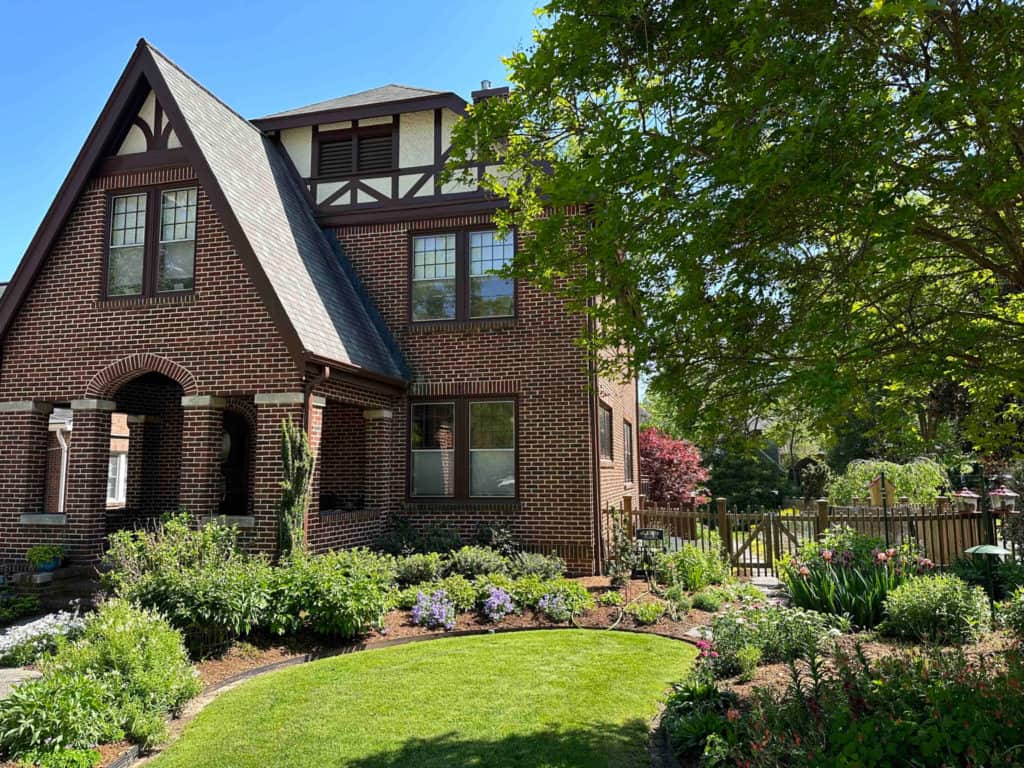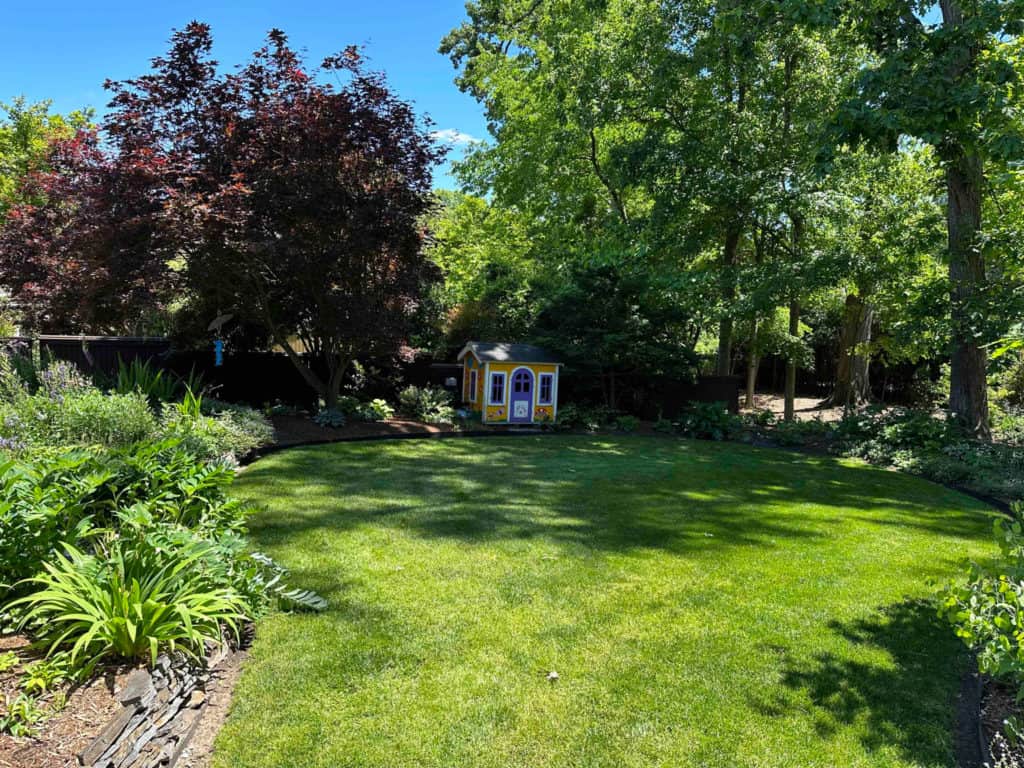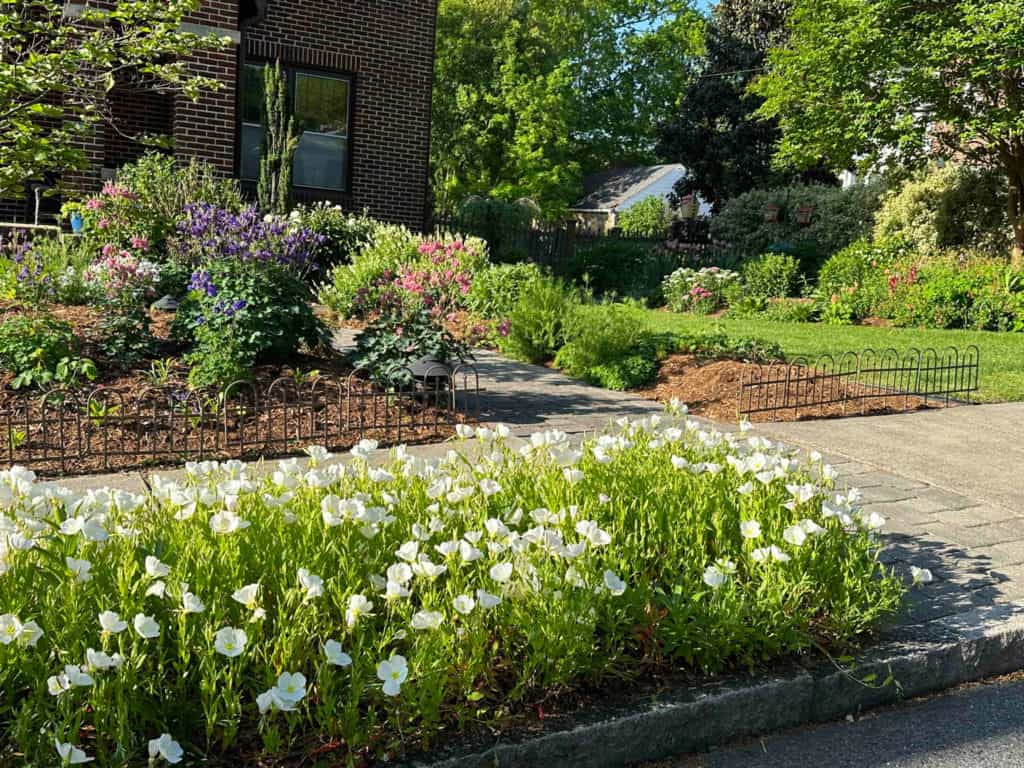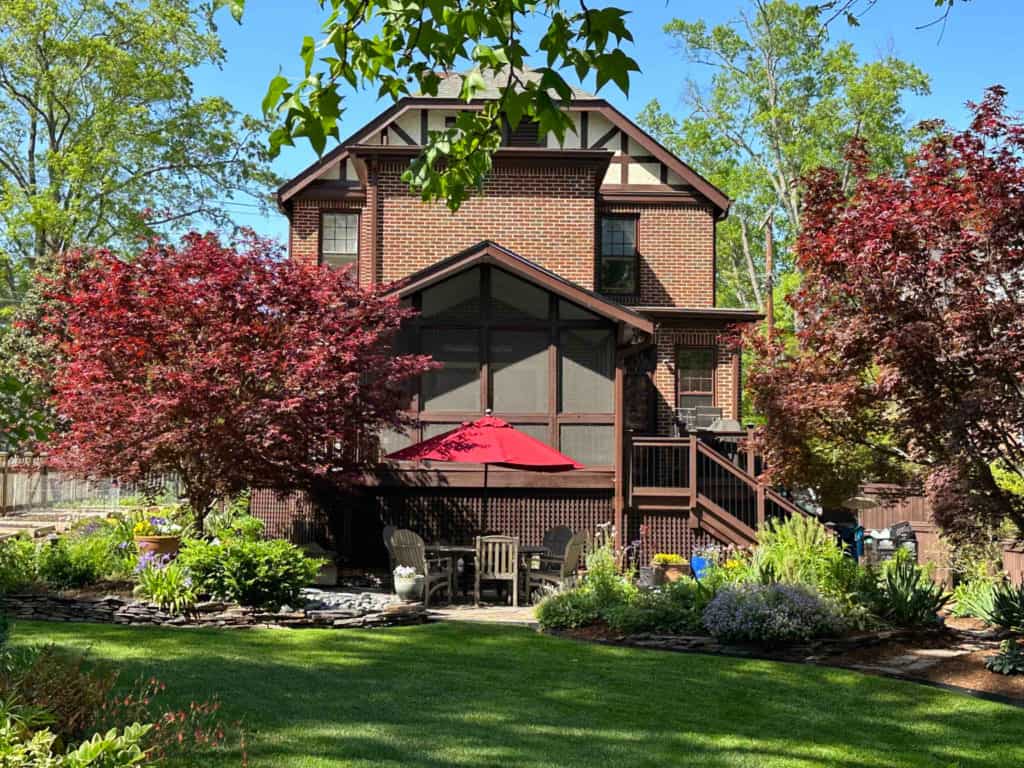By Sarah Hodder
The foam flower came from an elderly neighbor’s yard 20 years ago, and the tall Solomon’s Seal from a master gardener up north. A botanist neighbor on Watts St., now deceased, passed along some irises, and a peony also hailed from a garden around the corner, the original plant dating circa 1930. And the hellebore, well, they were a gift that just kept on giving… and giving.
Dale and Diane Pahl’s garden is full of stories, plants with pasts; bought, borrowed, and sown from seed. The two have lived in their West Markham house in Trinity Park since 1981, and they have been establishing and nurturing their backyard landscape ever since. The lawn and gardens were created intentionally for enjoyment and active observation, as play space for their children and now grandchildren, and as play space for the Pahls themselves – lots of dirt to dig in. And they delight in the results of that play; despite suffering allergies, they still relish the beauty and scent of flowers both on the vine and in the vase. (As do the myriad pollinators buzzing and fluttering among the beds.)

Diane claims they are “haphazard gardeners,” a humble way of saying they aren’t professional landscapers – their green thumbery consequent to many years of dirt beneath the fingernails. The Pahls have experimented with plants and their placement, adapted their garden beds to changing light after trees have died from disease or storm damage, have learned which flowers like to be where, when, and how to ensure vibrant color and exuberant birds in their yard, all year round. When plants become too ambitious, or fail to thrive, the Pahls divide them or move them, or try something else altogether. They are, as every gardener can’t help but be, always hopeful. The delicate spring ephemerals WILL appear out of the drab blank ground. Those seeds will one day be a brilliant bed of zinnias. Hard work helps – Diane confesses they never aspired to a low-maintenance garden. (She now practices winter sowing, an efficient and economical plant propagation technique, lest you assume there’s a season for rest in the Pahl gardening calendar…)
Dale credits good soil for their garden’s success. When they bought the house, Dale, a civil engineer by training, saw great potential in the space, in spite of erosion from mismanaged run-off, persistent ivy, bamboo and a few dying trees. With one six-month-old already, and more to come, the Pahls knew they wanted to create an outdoor area friendly to children, and an extended living space conducive to all the things they enjoyed, entertaining, eating, birding, reading and of course, gardening.

To start, they added a playset and sandbox… and then tackled the run-off. They created a more distinct creek bed across the property for the storm water run-off, adding riprap rocks to slow down the flow and prevent erosion. They built a bridge and berms and redirected water flow away from the house via drains. And, they brought in many, many cubic feet of enriched soil (from Sands and Soils) to amend and improve the native red clay base. Nourishing the soil is an ongoing task, and the Pahls continue to mulch and compost the beds, which are characterized by the amount of sun they receive and the evolving tree cover. They designed a curved yard delineated by stone paths and low stone walls, with a recirculating stream whose gentle trickle can be heard from the back porch. The area along the back southern fence is less choreographed but still punctuated with tea olives and yews, old growth white oaks and a sweet gum, among other trees, shrubs and shade-loving plants. In addition to many dozens of perennials and annuals surrounding the house with 360 degrees of color (virtually 365 days a year), the Pahls grow an extensive variety of vegetables in a long row of raised cedar beds and a cold frame on the western side of their house.
If you walk by the property today, in May, you will be wowed by the long street-facing border of pale pink Evening Primrose and Stella D’ora lilies. In a few weeks it will be something different, but equally lovely. If you see Dale, ask him about his bee house. And if you are lucky, Diane might be offering up a divided perennial, as their garden’s story continues.

See below for more on winter sowing.

